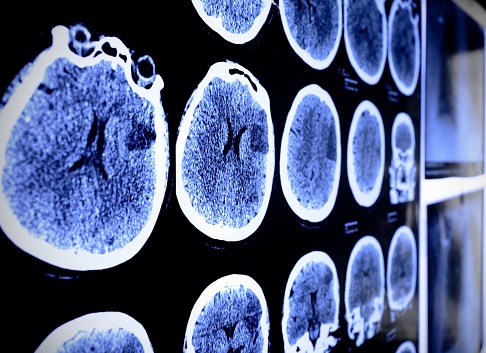A procedure is dramatically improving stroke care, but it isn’t always available

You probably know someone who’s experienced a stroke, considering nearly 800,000 Americans have one each year and stroke is the fifth leading cause of death, according to the Centers for Disease Control and Prevention (CDC).
According to Dr. Scott Geraghty, a neurointerventional surgeon at Advocate Christ Medical Center in Oak Lawn, Ill., roughly a quarter to half of the patients he sees suffer from a large vessel occlusion (LVO) stroke.
The problem with these strokes? They’re not always easily treated.
You may be familiar with tissue plasminogen activator, more commonly known as TPa, which helps break down blood clots. However, the word ‘thrombectomy’ may sound new to you. That’s because, according to Dr. Geraghty, the procedure did not gain widespread acceptance until a few years ago, with the publication of a handful of studies showing its dramatic positive effect.
What makes this emergent procedure so unique?
“It can help treat LVOs, a type of stroke that isn’t usually corrected with the use of TPa,” says Dr. Geraghty. “Stroke intervention dramatically increases the chances of patients regaining functionality.”
How does it work?
“It’s a minimally invasive procedure where I guide a catheter up through an artery in the leg and take it into the brain. Once in the brain, I can remove the clot using a specialized clot retrieval device.”
At Advocate Christ, home to a Comprehensive Stroke Center, which is one of only eleven in Illinois, this procedure is common and done frequently.
However, a recent Wall Street Journal article says, “Stroke experts estimate that 20 percent or more of severe stroke patients should receive thrombectomies, but in some parts of the country, as few as two percent end up receiving the care.”
Dr. Geraghty attributes this to a variety of reasons, one of them being you must have a physician who knows how to conduct the procedure. Yet, the biggest reason, as you can probably imagine, is a lack of resources.
“The equipment is expensive, staff training is extensive and often, there has to be a big enough need for hospitals to consider creating a stroke center or similar program,” says Dr. Geraghty. “At Advocate Christ, we are a Comprehensive Stroke Center because we have a lot of patients in our community that need access to this sort of treatment, but not every hospital has the same number of patients to justify the cost.”
Advocate Christ sees roughly 1,000 stroke patients a year, the highest volume in the Advocate Health Care system. Dee Behrens, program manager for stroke outreach, says there are many reasons why this may be the case, including the economic and racial makeup of the community.
Approximately 50 percent of the patients who receive stroke care at Advocate Christ are African Americans. The CDC says African Americans are nearly twice as likely to have a stroke compared to Caucasians. Furthermore, the CDC says African Americans also have the highest rate of death due to stroke.
While there’s no doubt that this procedure is important and should be available to all who need it, Dr. Geraghty wants to remind you that time is an essential factor, if not the most important factor, when it comes to stroke care and treatment.
In fact, the CDC says, “Patients who arrive at the emergency room within three hours of their first symptoms often have less disability three months after a stroke than those who received delayed care.” Yet, the CDC also says only 38 percent of all stroke patients were aware of all four of the major stroke symptoms and knew to call 9-1-1.
Do you know the signs of a stroke? Dr. Geraghty recommends you use the F.A.S.T. model:
Face: Half of your face may look like it is sagging or may be hard to move. This is where the muscles in the face have become paralyzed
Arm: Difficulty or the inability to raise your arm
Speech: Inability to speak or produce understandable speech
Time: If you experience any of the above symptoms, make sure you seek medical attention immediately
Did you know five of Advocate Health Care’s sites across multiple regions have the experts and resources available to perform thrombectomies? Find out more about Advocate’s Brain & Spine Institute and the multiple locations aimed at providing you the best care.
Related Posts
Comments
About the Author
health enews staff is a group of experienced writers from our Advocate Health Care and Aurora Health Care sites, which also includes freelance or intern writers.

















